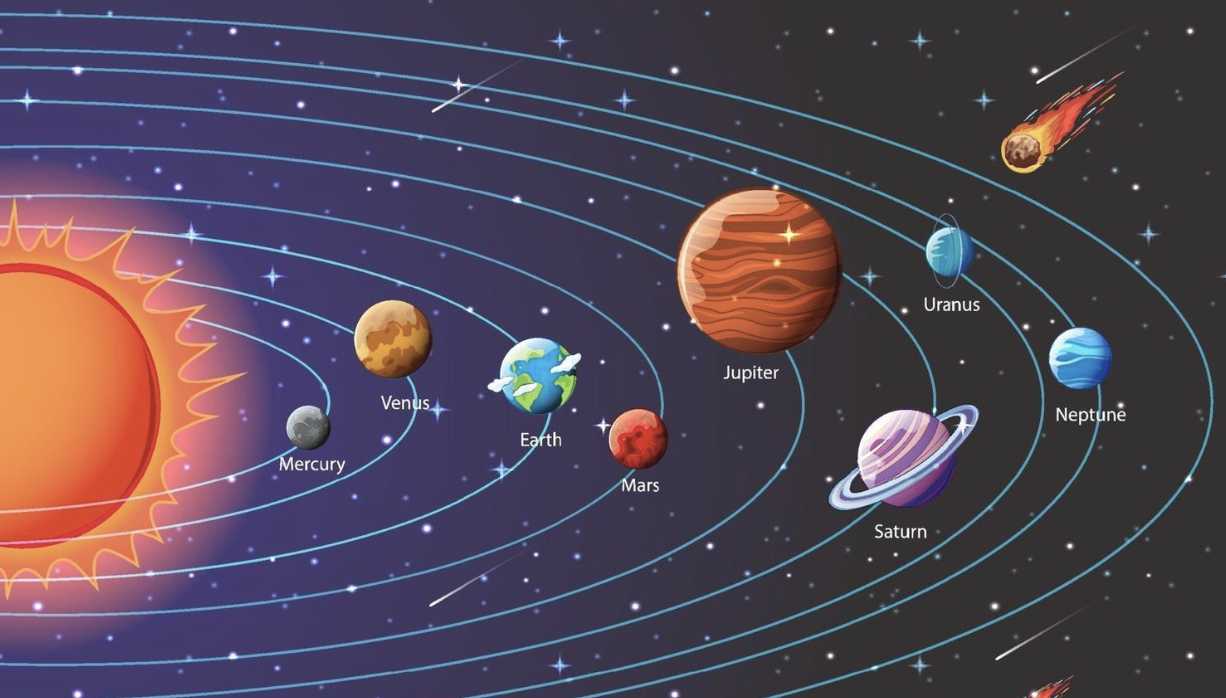Teaching kids about the solar system can be both educational and exciting. Here are some key points and ideas you can incorporate into their learning:
- Basic Structure: Start by explaining that the solar system consists of the sun, planets, moons, asteroids, comets, and other celestial objects. Show them pictures or models to make it more tangible.
- Planets: Introduce the planets in our solar system, starting with the closest to the sun:
- Mercury
- Venus
- Earth (our home!)
- Mars
- Jupiter
- Saturn
- Uranus
- Neptune
- Discuss their characteristics, such as size, composition, and unique features (e.g., rings for Saturn, red color for Mars).
- Orbits: Explain how planets orbit the sun in elliptical paths. You can use visual aids or even create a model using balls and a light source to represent the sun.
- Moons: Discuss the moons of different planets, such as Earth's moon, Jupiter's many moons (like Europa and Io), and Saturn's moon Titan. Talk about their sizes, surfaces, and potential for exploration.
- Asteroids and Comets: Briefly mention asteroids (rocky objects) and comets (icy objects), their orbits, and the occasional impact they can have on planets.
- Space Exploration: Touch on human exploration of space, including missions to other planets, satellites like the Hubble Space Telescope, and the International Space Station (ISS).
- Fun Facts: Share some fascinating facts about the solar system, such as the extreme temperatures on Mercury and Venus, the Great Red Spot on Jupiter, or the icy conditions on Neptune.
- Interactive Activities: Engage kids with interactive activities like planetarium visits, stargazing nights, creating planet models, or watching educational videos about space.
- Encourage Questions: Encourage curiosity by inviting kids to ask questions about the solar system. Answer their inquiries or explore the answers together through books or online resources.
By incorporating these elements into their learning, you can make the study of the solar system both informative and enjoyable for kids.
Kids often love learning about the solar system for several reasons:
- Fascination with Space: The vastness and mystery of space capture children's imaginations. They are naturally curious about what lies beyond Earth and are excited to learn about planets, stars, moons, and other celestial bodies.
- Visual Appeal: The vibrant colors, unique shapes, and awe-inspiring imagery associated with the solar system, such as the rings of Saturn or the red spot on Jupiter, are visually captivating for kids.
- Discovery and Exploration: Learning about the solar system offers children a sense of discovery and exploration. They enjoy uncovering new facts about different planets, their characteristics, and how they interact within the solar system.
- Science Fiction Influence: Many children are exposed to science fiction stories, movies, and TV shows that feature space exploration, aliens, and futuristic technology. This exposure can spark their interest in learning more about real-world space science.
- Educational Value: Understanding the solar system helps children grasp fundamental scientific concepts such as gravity, orbits, planetary composition, and the Earth's place in the universe. This knowledge can be both educational and inspiring for young learners.
- Imagination and Creativity: Learning about space encourages children to use their imagination and creativity. They may enjoy drawing or creating models of planets, designing imaginary space missions, or envisioning what life could be like on other planets.
Overall, the solar system provides a fascinating and educational topic that combines science, exploration, and imagination, making it highly engaging for kids. Be sure to check out my resource:
LET'S LEARN ABOUT THE SOLAR SYSTEM - 2ND - 4TH GRADES - LESSON PLAN & ACTIVITIES
Check out my Facebook page, Elly Elementary.
What is your favorite part of the solar system? Please comment below.



Comments ()